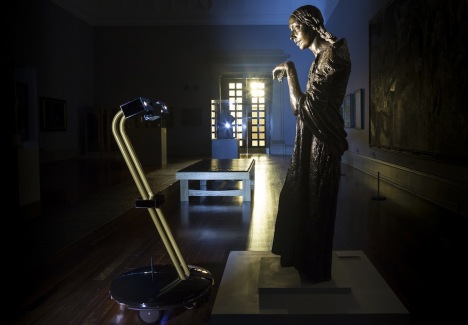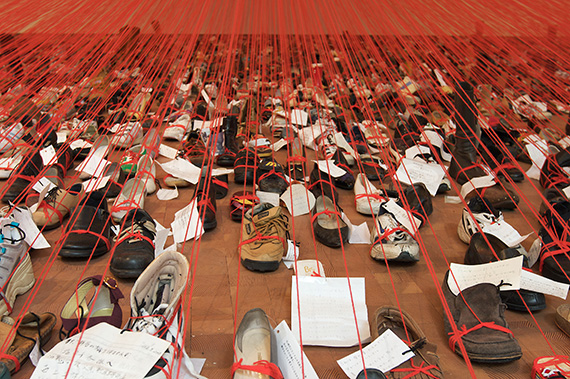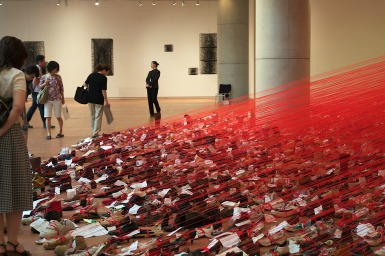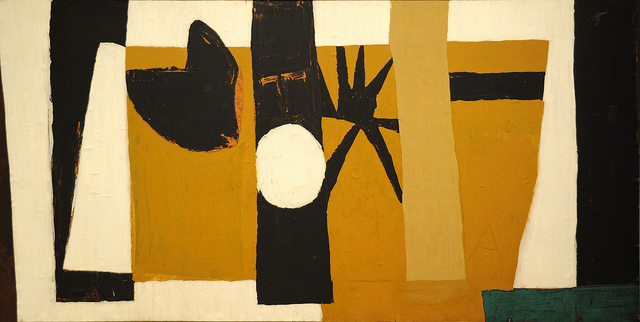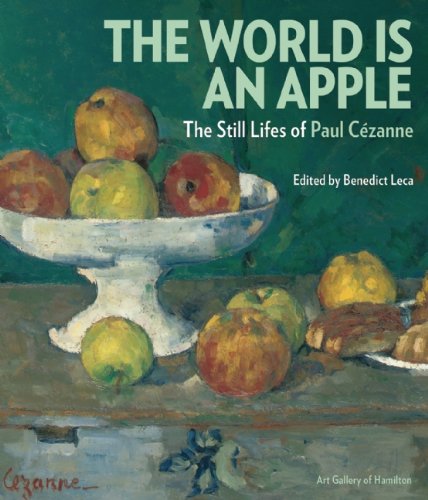This is just plain bad: Last week, a painting titled Madonna with the Saints John the Evangelist and Gregory Thaumaturgus (1639) was stolen from a church in Modena, Italy. Not only was the church alarm system in active, but also the Baroque masterpiece wasn’t insured.
 It’s a big painting –Â 10 ft. by 6 ft. — and reports say it was stolen in its frame, with speculation that the theft was “ordered” by a private collector because a work of this size and renown would be hard ever to resell openly. Unless, speculated the Telegraph in London, it was “cut up into pieces in an attempt to sell it on.”
It’s a big painting –Â 10 ft. by 6 ft. — and reports say it was stolen in its frame, with speculation that the theft was “ordered” by a private collector because a work of this size and renown would be hard ever to resell openly. Unless, speculated the Telegraph in London, it was “cut up into pieces in an attempt to sell it on.”
The Telegraph‘s article, pegged the value of the work at “up to £5 million,” or nearly $8.4 million.
It was stolen in the middle of the night from the church of San Vincenzo in the northern town of Modena earlier this week. Curators admitted that lack of funds meant the alarms protecting the painting were not working.
“There was an alarm in the church, but it was inactive,” said Monsignor Giacomo Morandi, of the archdiocese of Modena.
It had been paid for by a donation from a local bank but once those funds dried up it had been switched off, he told Corriere della Sera newspaper.
“It’s very difficult to protect every single work of art,” he added.
The work has hung in the Church of San Vincenzo ever since it was painted. According to The History Blog,
An allied bomb struck San Vincenzo on May 13th, 1944, destroying the presbytery and the choir and its late 17th century frescoes, but the Guercino survived. Let’s hope it can survive human greed.
The History Blog also provided these details:
San Vincenzo is not a parish church so it doesn’t stay open all week. The doors are opened every Sunday for mass and locked after the service is over. The thieves made their way inside, stole the painting and got out without leaving a trace. There is no sign of forced entry on the church door. The priest only realized something was wrong because the door was open.
Police believe at least three men were involved in the theft because the piece is so big and heavy, especially still inside the frame, that it one or two people wouldn’t be able to move it. They probably got in during mass on Sunday, August 10th, and hid until they could do their dirty deed under cover of night. They must have had transportation, most likely a van.
…The Carabinieri’s Tutela Patrimonio Culturale unit (a national police squad dedicated to investigating stolen art and antiquities) are in charge of the investigation. They’re looking through phone records and security camera footage from along the street. There are no cameras pointed at the church, but a van large enough to contain the painting should have been captured by other cameras.
Looks as if we have seen the last of this work for some time. But maybe the police will get lucky.

